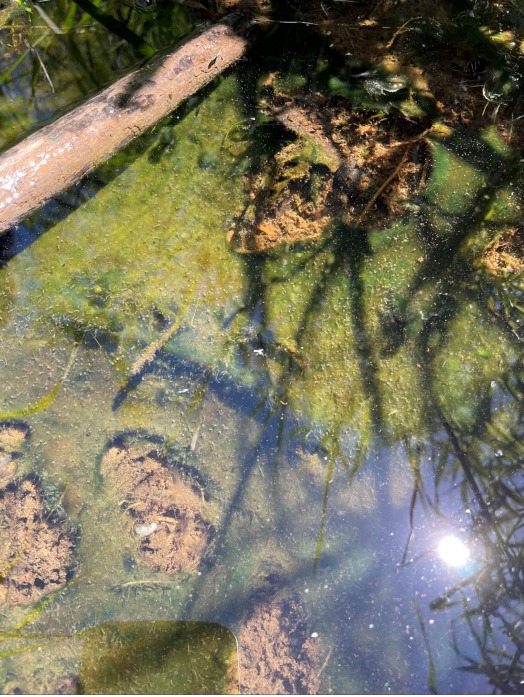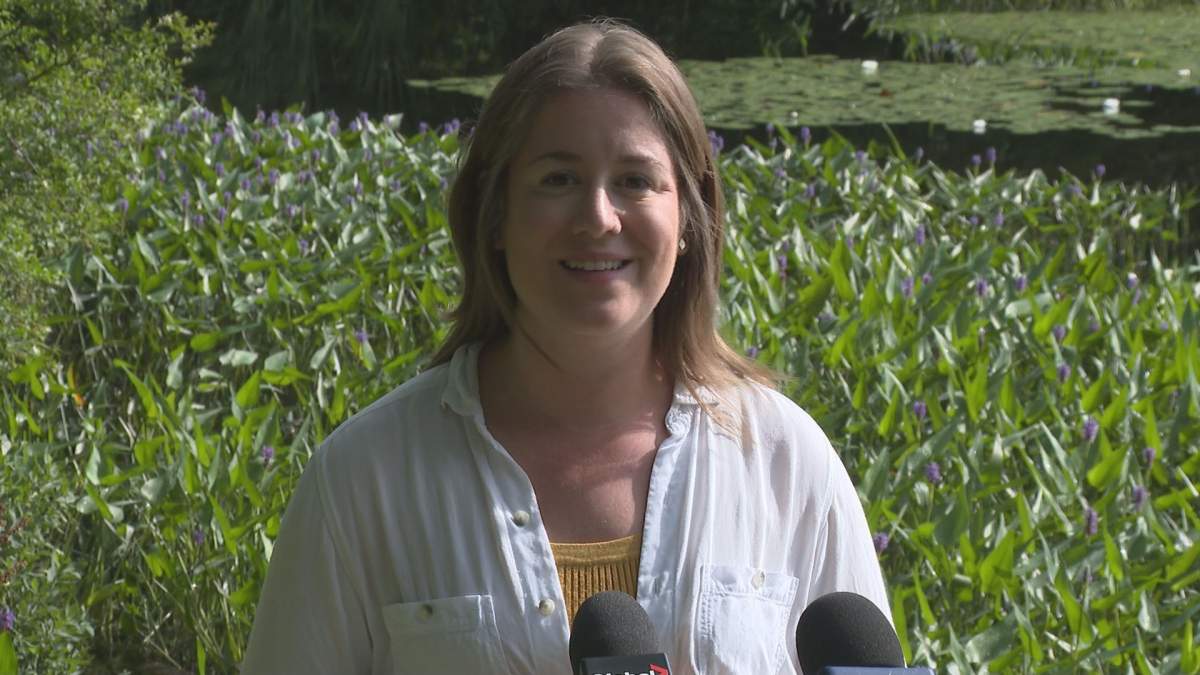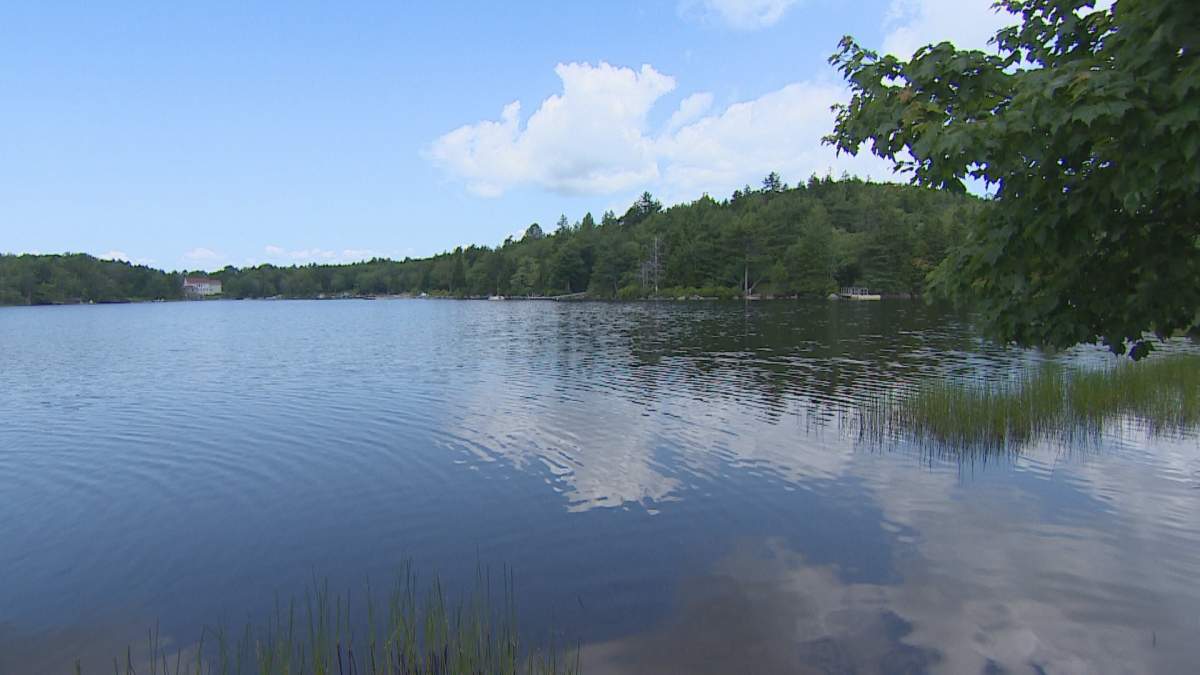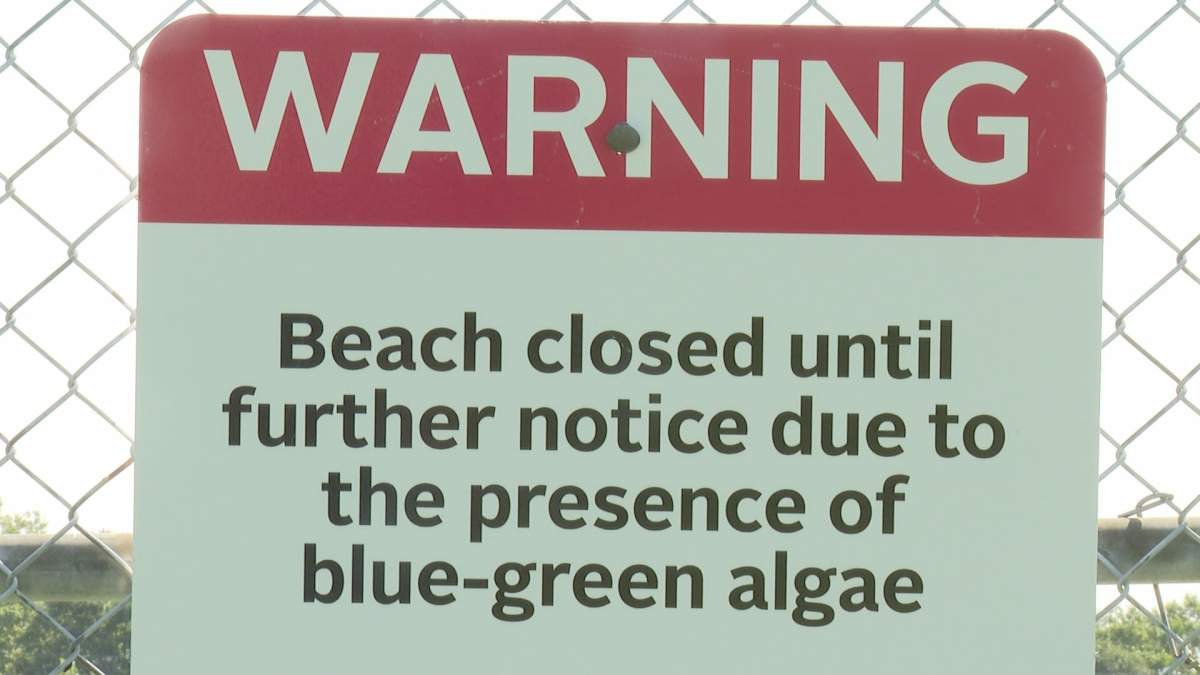The Halifax Regional Municipality is asking residents to familiarize themselves with blue-green algae, a harmful bacteria that can be found naturally in lakes, rivers, ponds and streams.

An information session on blue-green algae was held at Oat Hill Lake in Dartmouth, one of the places where the bacteria was reported last month.
“We’ve been finding them everywhere,” says Elizabeth Montgomery, HRM’s water resources specialist. “We’re not sure if they’re new… we suspect that people are looking for them now.”
Also known as cyanobacteria, algae are some of the oldest organisms on earth and can be found naturally in lakes, rivers and ponds in and around the Halifax region.
“They can look like spilled paint…they can look like glass spillings or an oil spill,” Montgomery says.
In June, there were numerous reports of blue-green algae, including at lakes in Lunenburg County and Kings County.
The only active report of blue-green algae is at Cunard Beach in Halifax.
Categorizing blue-green algae
Cyanobacteria can take many forms but are generally categorized as “blooms” or “mats.”
Blue-green algae blooms are typically bright green and free-floating on the surface of the water. They can produce dangerous toxins.

Blue-green algae mats typically grow along the bottom of the lake.

Major health risks

Get weekly health news
The toxins from cyanobacteria can cause itchiness, redness, rashes or hives if ingested by humans.
For pets, it can be fatal.
There has been one confirmed pet fatality in Nova Scotia as a result of blue-green algae.
“The fatalities we are seeing are coming because these mats wash up on shore, and we think that they’re sending out a smell that makes dogs interested,” Montgomery says.
“So, they’re eating the mat material and it’s a pretty potent neurotoxin.”
Emma Wattie, an HRM environment manager, says pet owners should closely supervise their pets when allowing them to roam freely outdoors, especially near large bodies of water.
“Observe your dogs, try not to let them eat anything kind of gross looking,” Wattie says. “And if you suspect that they might’ve eaten something… talk to your vet right away.”
A warning sign has been put up at Cunard beach to alert residents of the cyanobacteria, and its risks. City officials say they plan to put up more “permanent” signs.
“If you see something suspicious, assume that its toxic,” Montgomery says.












Comments